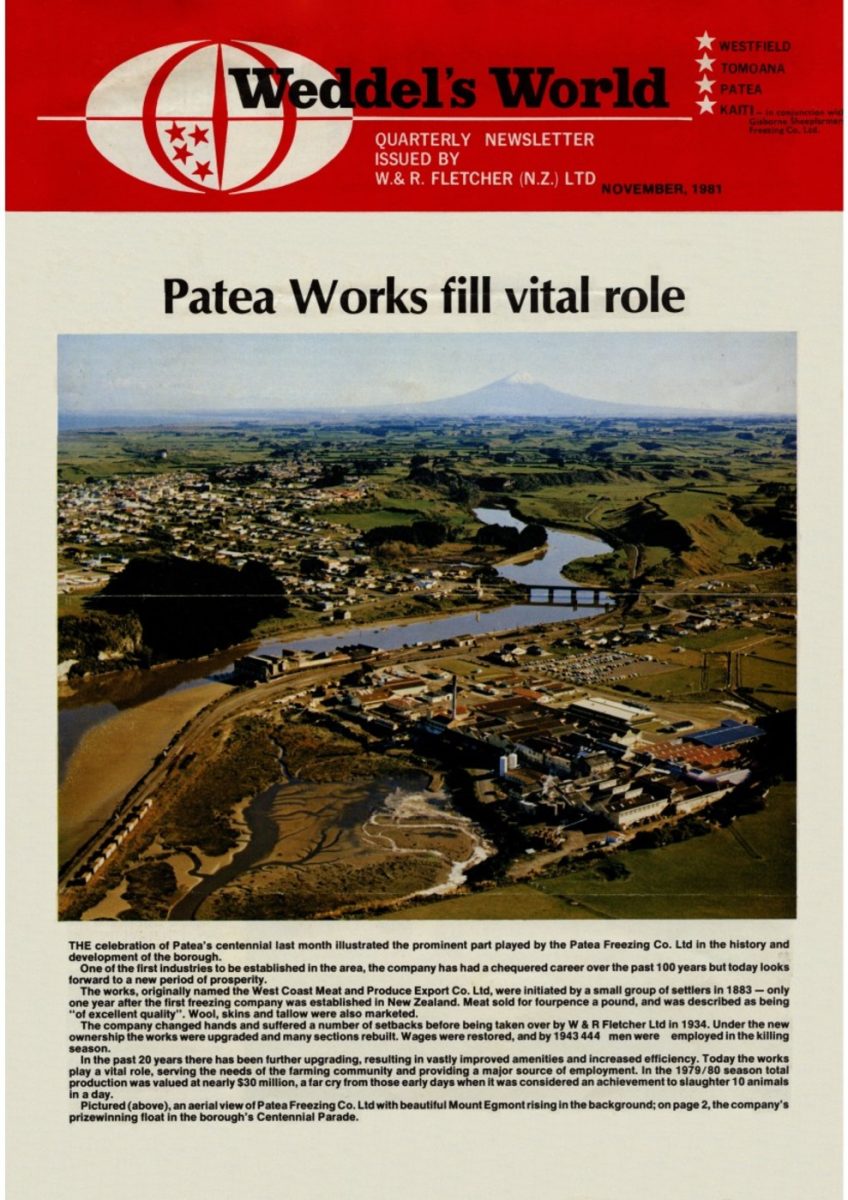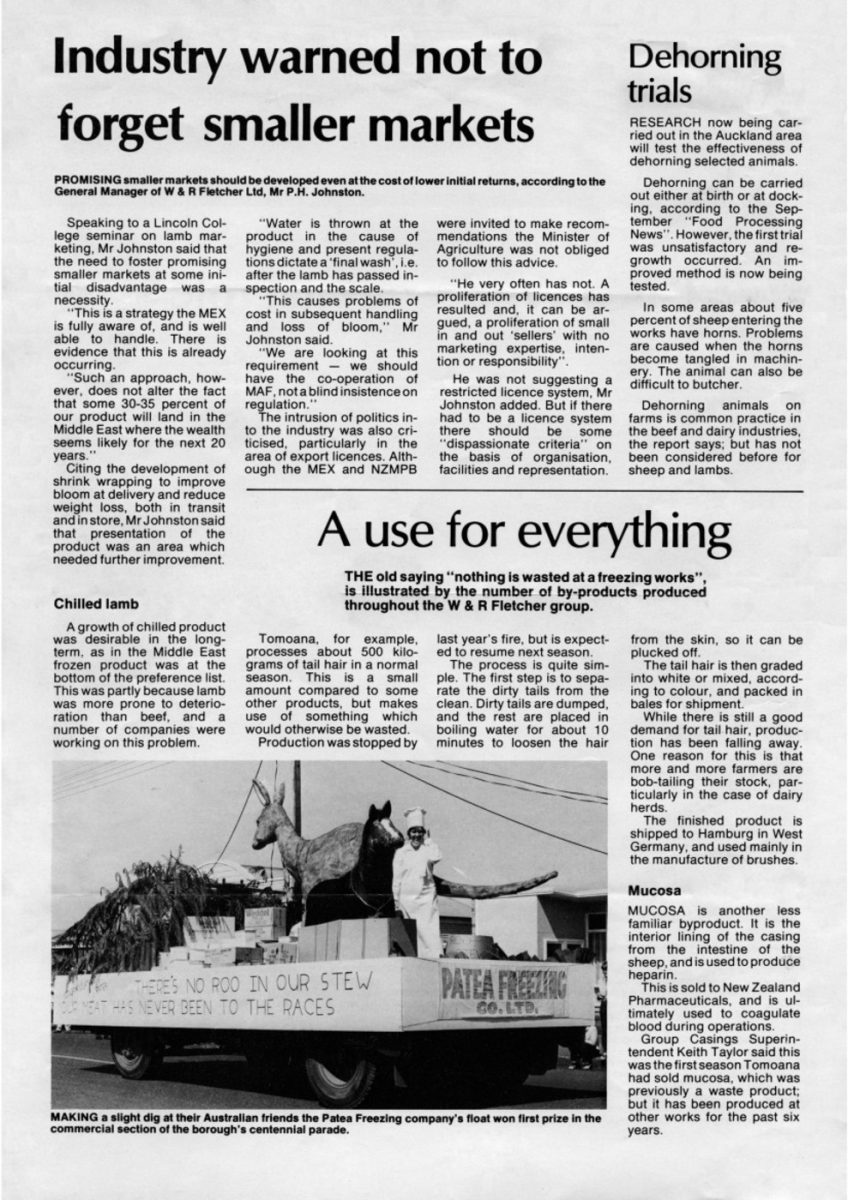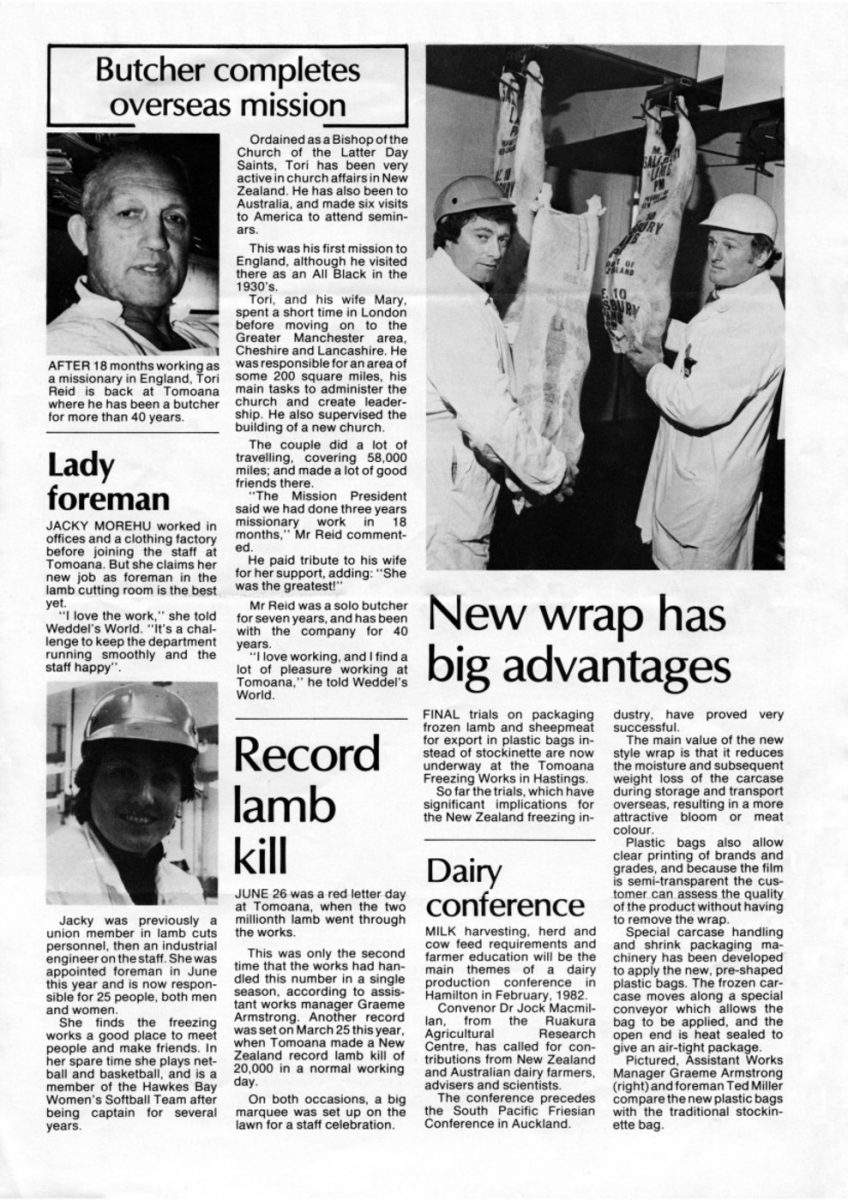STAFF NEWS
RECENT transfers include:
TO WELLINGTON: Marissa Niemiec from Nelsons, Gisborne to head office shipping; John Fretchling from Patea, accounting trainee; Denis McLenaghan from Patea, production.
TO PATEA: Ray Offord from Wellington, chief accountant; Graeme Daines from Wellington, production manager.
TO TOMOANA: Andy Parkinson from Patea, chief accountant
TO HASTINGS TANNERY: John Astley from New Zealand Light Leathers, Timaru, to replace Nigel Dobson as Manager.
EACH of these six staff members, who recently retired from Westfield, have given more than 40 years’ service to the company. This will become a rarity in the future with later school leaving and earlier retirement ages, notes our Westfield correspondent.
From left: Bill Wilson (Chief Works Clerk), 49 years; Trevor Clayton (Forwarding Supervisor), 45 years; Andy McMullen (Assistant Freezer Foreman), 43 years; Dennis Clarke (Cannery Adviser), 49 years; Trevor Gillett (Paymaster), 42 years. Sitting: Lloyd Souness (Assistant General Manager), 45 years.
Ships Stores Manager Jack Calder just missed out on being in the photograph – he had completed only 38 years’ service.
PROFILE
Westfield engineer wins accounting prize
JOHN BLACK, recently appointed Assistant Chief Engineer at Westfield, is a graduate member of the NZ Institute of Engineers and the Institution of Chemical Engineers (London).
Head Prefect at Onehunga High School in Auckland, John won a bursary to Auckland University where he gained a Bachelor of Engineering degree with Honours in Chemical and Materials Engineering.
After being employed by the NZ Electricity Department as a cadet and assistant engineer, he joined the Westfield Freezing Co as project engineer in 1976.
In 1979 he began to study for a Bachelor of Commerce degree by correspondence from Massey University, and last year was awarded the NZ Society of Accountants prize for stage two Financial Accounting and Cost and Management Accounting.
He was appointed to his present position following the transfer of Bob Shilton to the UK in May this year.
John’s wife, Jan, has a Bachelor of Arts degree. She also has diplomas in music, and teaches the piano.
40 years service
THE record number of gold watches presented at Tomoana this year must be a good recommendation for the company, and the relationship between management and staff.
Forty years service has been completed by Pat Donnelly, engine room; Dave Thompson, watchman; Tom O’Kane, mutton slaughterfloor; William (Chappie) Kingi, senior mutton slaughterfloor; Dave Colello, rendering; Brian (Guthie) Reeves, butcher shop; Tori Reid, slaughterfloor.
The next presentation will be to Martin (Bully) Ropiha snr, mutton slaughterfloor.
Retirements
BEST wishes to Ray Bernie, assistant boning room foreman, who has retired from Tomoana due to ill health.
Mr Bernie joined the staff in 1956. We wish him a long and happy retirement.
MR Graham Fredericks has retired as Group Purchasing Manager after 41 years with the company.
The management and staff of W & R Fletcher Ltd wish Mr Fredericks many happy years, and good bowling!
GOLDEN OLDIES IN THE STATES
THE recent “Golden Oldies” Rugby Tour to California and Hawaii had a strong Tomoana content with five players from the works, and one from Hastings Tannery, in addition to the many supporters.
To qualify as a “Golden Oldie”, players had to be over 35 years of age. Most were members of the Havelock North Rugby Club, but joined with the Hawkes Bay Saracens to form one of the 13 New Zealand teams in the tournament.
Players included George Maoate and Ian Henderson, both butchers on the chain; Winston Stephenson, beef house delegate; Terry Davies, slaughterhouse senior foreman; Frank Jones, assistant slaughterhouse foreman; and Bob Mitchell, accountant at the tannery.
Among the supporters were Rangi Whaanga, Dick Cunningham and Milton Mako, all from Tomoana; two women union members, Maryanne Pearse and Daphne Mako; and other wives.
The team won two of the three games played at Long Beach, and took part in a mini-tournament at San Francisco where they had a single win. They also had a win in Hawaii, playing in a mixed team.
It was a “great trip”, according to Terry Davies, a player and one of the assistant tour managers.
The American hospitality was “just fantastic”, he added.















Do you know something about this record?
Please note we cannot verify the accuracy of any information posted by the community.